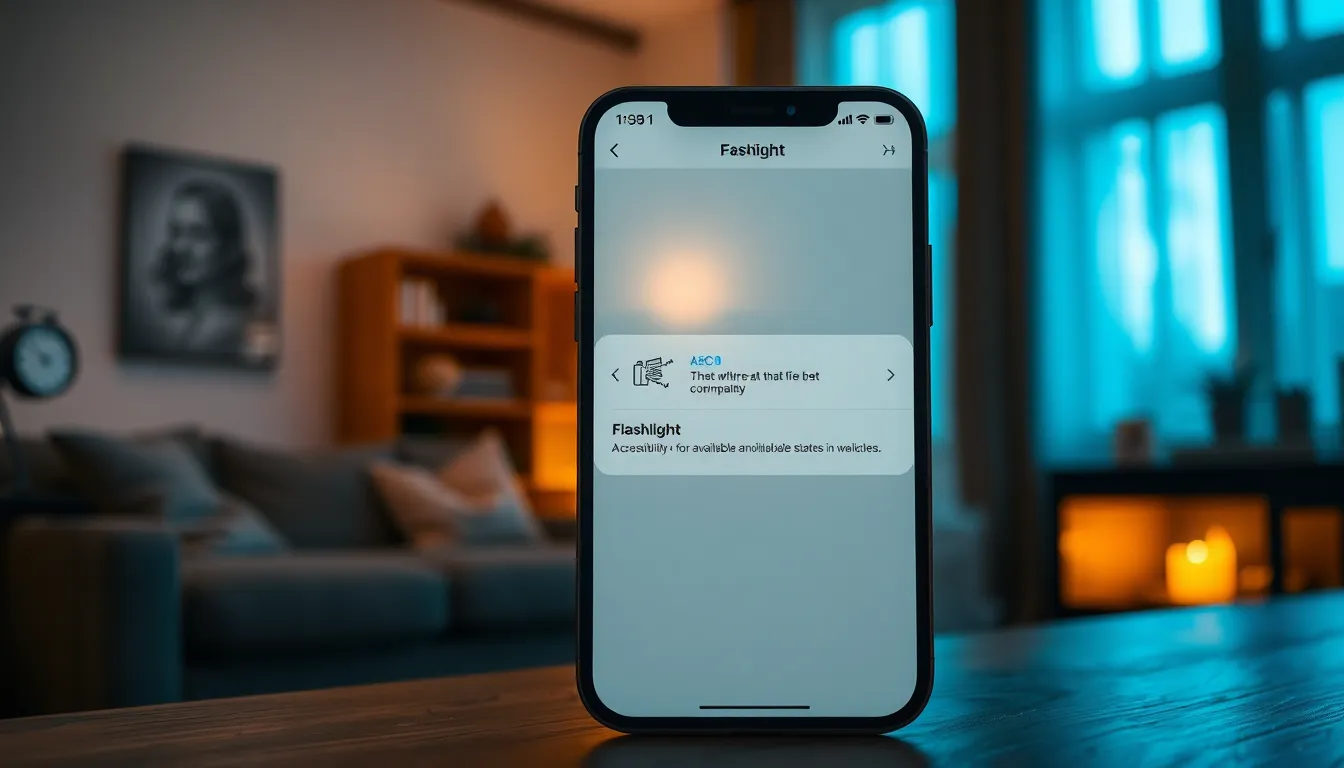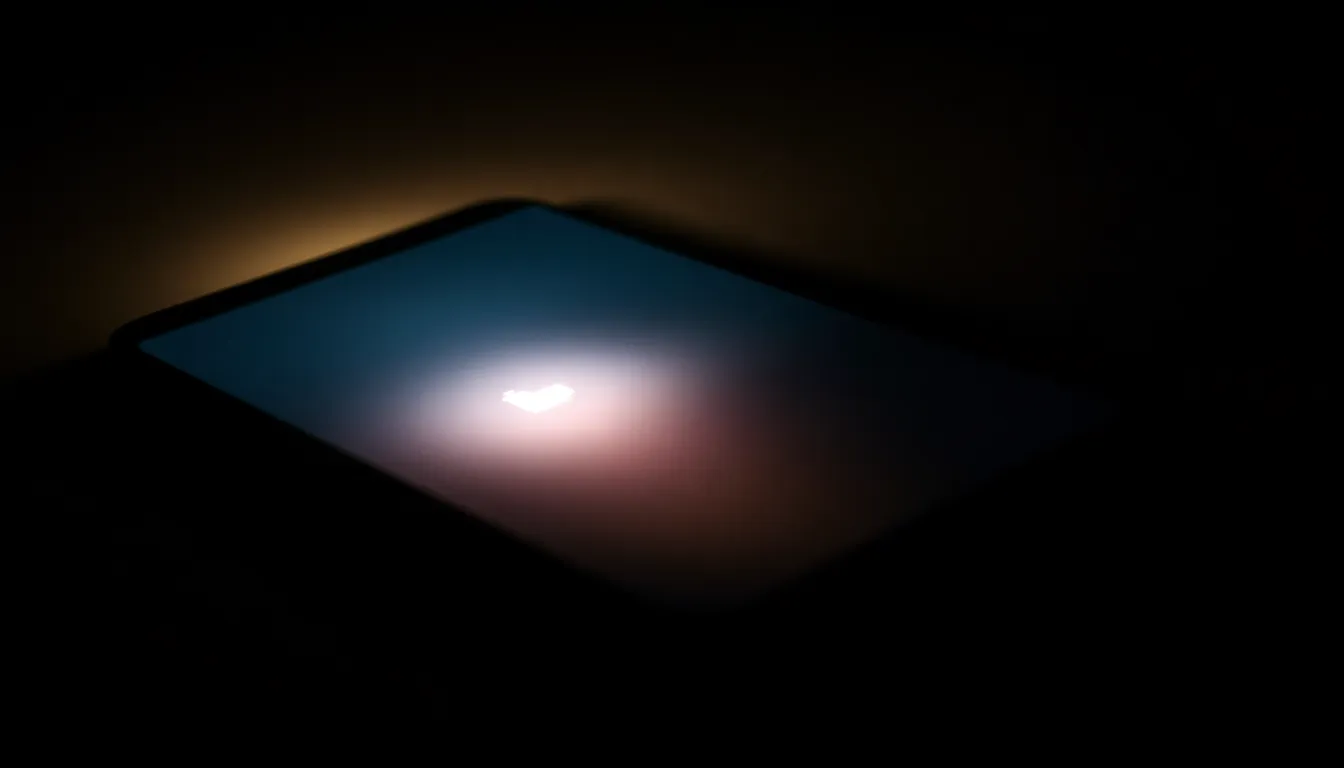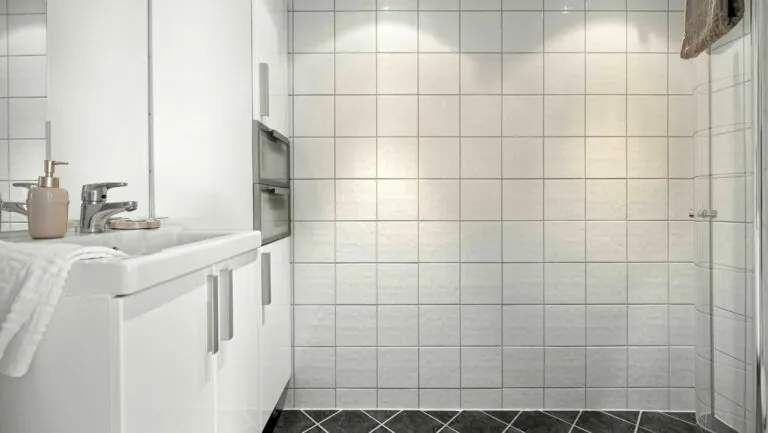Ever found yourself in a pitch-black room, fumbling for your iPhone like it’s a game of hide-and-seek? You’re not alone! The flashlight feature is a lifesaver, but sometimes it plays hard to get. Whether it’s buried in the depths of your settings or hiding in plain sight, that little beam of light can feel like a magician’s trick gone wrong.
Table of Contents
ToggleOverview of iPhone Flashlight Feature
The iPhone’s flashlight feature serves as a practical tool for illuminating dark spaces. Users access it easily through the Control Center or the Settings app. The Control Center provides quick access; swiping down from the upper-right corner on newer models or up from the bottom on older models reveals the flashlight icon.
LED technology drives the flashlight’s brightness. This generally offers users ample illumination for various tasks, such as finding items in a dark room or navigating at night. The flashlight also features adjustable brightness levels, allowing users to customize the intensity for their needs.
Settings provide another way to access the flashlight. Users navigate to Settings, then tap on the “Flashlight” option under “Control Center.” From there, they can add the flashlight icon to their Control Center for more straightforward access.
Some users may not realize that the flashlight option can be found within the Camera app as well. Activating the camera opens additional functionality for using the flashlight as a flash for photos and videos.
Troubleshooting may help when users can’t locate the flashlight. Checking for software updates in Settings may resolve glitches preventing flashlight access. Restarting the device also often corrects minor issues.
Periodically, peripheral problems, such as a malfunctioning LED or hardware damage, can hinder flashlight performance. They should ensure the device isn’t damaged to maintain optimal functionality.
Common Issues with Flashlight Accessibility

Locating the flashlight on an iPhone can sometimes present challenges. Several issues may interfere with accessibility, including software glitches and settings configuration.
Software Glitches
Software glitches can hinder the flashlight function on an iPhone. These temporary issues may manifest as unresponsive features or inconsistent performance. Restarting the device often resolves minor glitches. Alternatively, updating the software can address bugs, ensuring all features run smoothly. Users should check for updates in the Settings app under General. Performing a forced reboot might also remedy more stubborn problems, restoring the flashlight’s functionality.
Settings Configuration
Settings configuration plays a crucial role in flashlight accessibility. Users must ensure the flashlight option is enabled in the Control Center. Navigating to Settings, then Control Center allows for customizing available features. Adding the flashlight icon here enables faster access during emergencies. If mistakenly removed, users can easily reintegrate it. Additionally, checking the Do Not Disturb mode is advisable, as it might restrict notifications and affect feature visibility.
Troubleshooting Steps
If the flashlight feature is elusive, several steps can help restore its functionality. Actively following these troubleshooting measures can improve access to this essential tool.
Check Control Center
Accessing the Control Center provides a direct route to the flashlight feature. Users swipe down from the upper-right corner on newer iPhones or up from the bottom on older models. The presence of the flashlight icon signals that it’s enabled. If the icon is missing, users may need to customize their Control Center settings by heading to Settings, selecting Control Center, and adding the flashlight option. Frequently checking this area can ensure quick access to the flashlight even in dim light.
Restart Your Device
Sometimes, simply restarting the device resolves flashlight issues. Powering off the iPhone and turning it back on can clear temporary glitches. Users, after initiating a restart, might notice improved functionality. To restart, press and hold the side button until the power-off slider appears. Dragging the slider turns off the device, while holding down the side button again restarts it. This simple action can also free up memory resources that might be affecting performance.
Update iOS
Keeping the iPhone’s software up to date often enhances overall performance, including flashlight functionality. Users should periodically check for software updates to avoid glitches that disrupt features. To check for updates, navigate to Settings, tap General, and select Software Update. If an update is available, following the prompts facilitates the installation. Staying current with iOS updates can eliminate bugs impacting the flashlight and other features.
Alternative Ways to Access Flashlight
The flashlight feature on an iPhone can also be accessed through alternative methods, making it easier to locate even in the dark.
Using Siri
Siri offers a hands-free option for accessing the flashlight. Users can simply say “Hey Siri, turn on the flashlight” or “Turn off the flashlight” to control the function. This feature allows for quick activation without fumbling through settings. Many find this method particularly advantageous when hands are occupied or when the device is locked. Activating Siri can also provide immediate results, streamlining the process of illuminating dark spaces.
Accessing from Lock Screen
The lock screen provides another easy pathway to the flashlight. Users should swipe left on the lock screen to reveal the camera interface. In this interface, the flashlight icon appears at the bottom left corner. Tapping this icon activates the flashlight instantly, even when the device is locked. This method saves time and circumvents the need to unlock the device. Additionally, it ensures quick access to light whenever necessary, enhancing user convenience.
Finding the flashlight on an iPhone doesn’t have to be a frustrating experience. With quick access through the Control Center and alternative methods like Siri or the lock screen, users can easily illuminate dark spaces. Regularly checking for software updates and ensuring the device settings are configured correctly can prevent common issues that may hinder flashlight functionality. By following the troubleshooting steps outlined, anyone can enjoy the convenience of their iPhone’s flashlight feature, making it a reliable tool in any situation.





